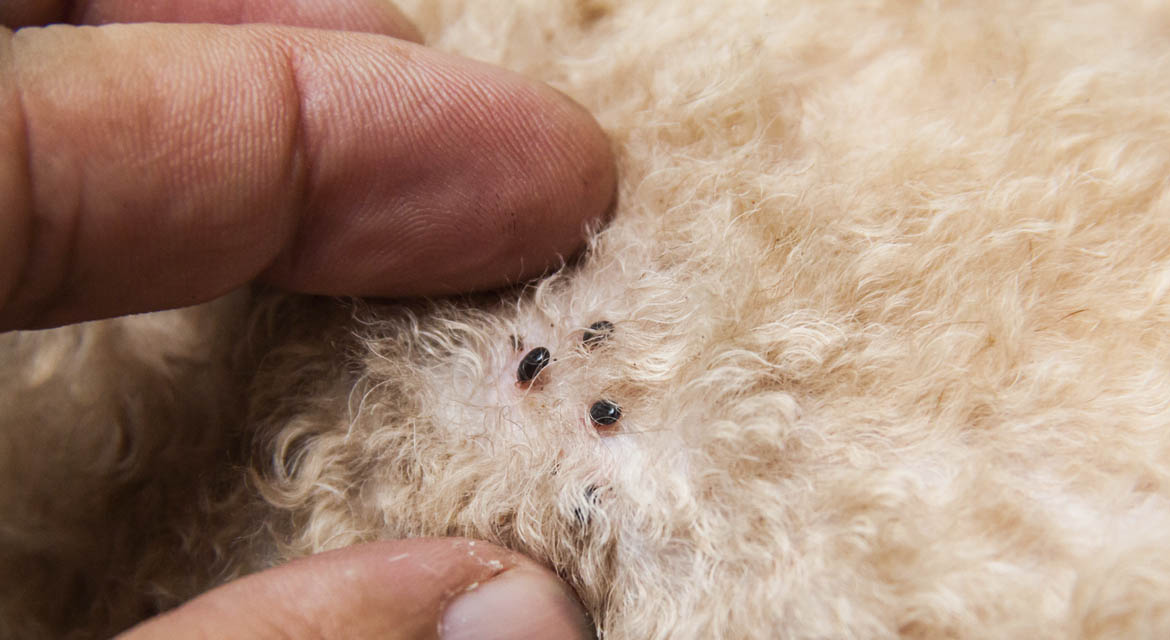
Flea Facts & Information
The concerns of a flea infestation at home include potential discomfort and bites to humans and pets, the potential for the spread of diseases, and the challenge of eradicating the infestation completely.
Risks of Fleas
Bites and Irritation
Fleas are blood-feeding parasites that bite animals and humans to obtain their blood meals. Their bites can cause itching, redness, and discomfort. Flea bites commonly occur on the lower legs, ankles, and feet, but they can appear on other parts of the body as well. In some individuals, flea bites can lead to an allergic reaction, resulting in more severe symptoms such as intense itching, swelling, and the development of painful lesions.
Transmission of Diseases
Fleas are capable of transmitting various diseases and pathogens. One of the most well-known diseases transmitted by fleas is the bubonic plague, although human cases are rare. Fleas can also transmit other bacterial and parasitic infections, such as murine typhus, cat scratch disease, or certain types of tapeworms. Pets, particularly cats and dogs, are at risk of contracting flea-borne diseases. It is crucial to promptly address flea infestations to prevent the spread of potential pathogens.
Impact on Pets and Animals
Flea infestations can be particularly problematic for pets and animals. Fleas can cause significant discomfort, itching, and skin irritations in pets, leading to excessive scratching, hair loss, and skin infections. In severe infestations, pets may develop anemia, particularly in young or small animals, due to the excessive blood loss caused by fleas feeding on them. Flea infestations can also contribute to the transmission of certain parasites, such as tapeworms, which can further compromise the health of pets.
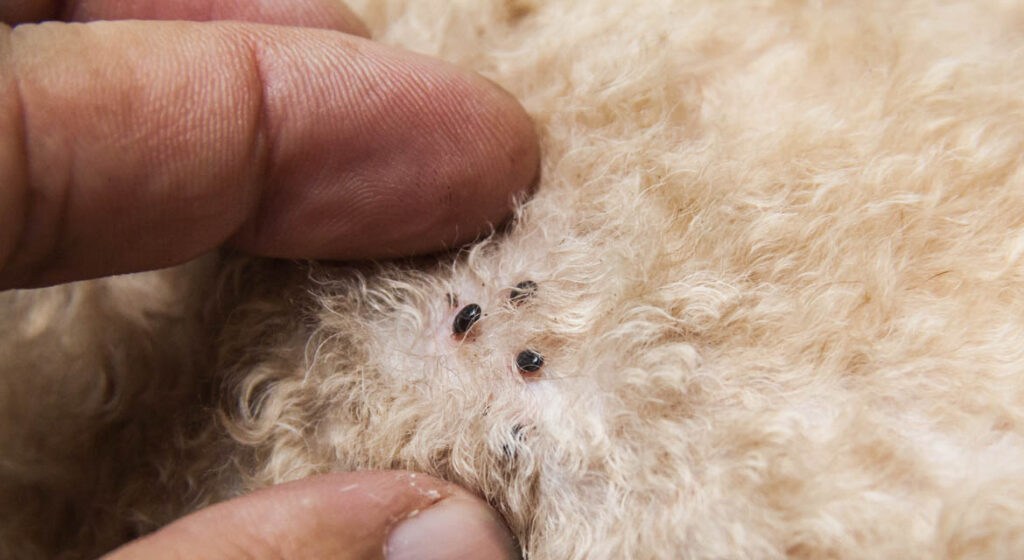
Truly Nolen GUARANTEE
If you’re not completely satisfied, you’ll get a full refund on your most recent service with our 100% money back guarantee.
Common Species of Fleas
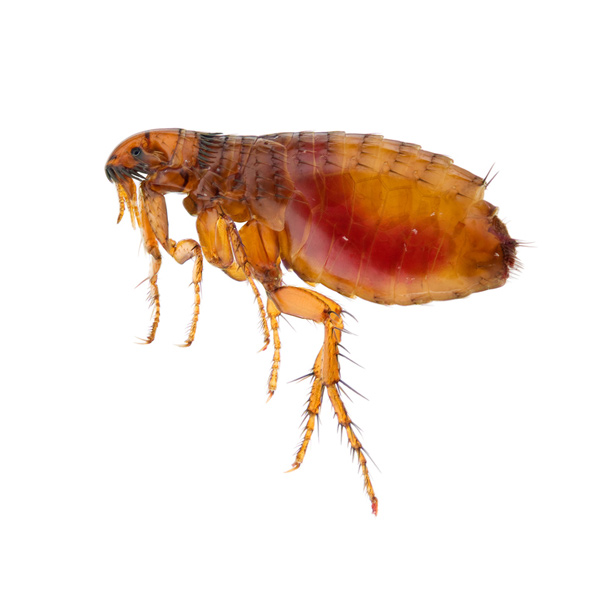
Cat Flea
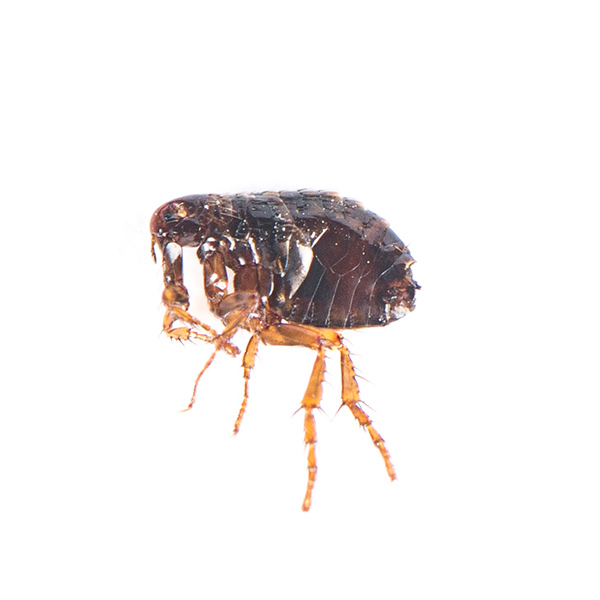
Dog Flea
How To Identify Fleas
Fleas can be identified by their small size, dark reddish-brown color, and their ability to jump long distances. To identify a flea infestation at home, look for signs such as itchy bites on humans or pets, flea dirt (tiny black specks resembling pepper) on bedding or pet fur, and the presence of live fleas or their eggs in areas where pets frequently rest or sleep.
Flea Appearance
Fleas are small, wingless insects of the order Siphonaptera. They have a laterally compressed body, measuring between 1.5 to 4 millimeters in length. Fleas have long hind legs adapted for jumping, allowing them to move quickly through the fur or feathers of their hosts. They have piercing mouthparts used for blood feeding. Fleas are typically brownish-black or reddish-brown in color and have a tough exoskeleton that enables them to withstand pressure and resist squashing.
Flea Habitat
Fleas are found worldwide and are adapted to various habitats. They commonly infest mammals, including domestic pets like dogs and cats, as well as wild animals such as rodents, rabbits, and squirrels. Fleas prefer warm and humid environments, often thriving in areas with organic debris, such as animal bedding, carpets, and cracks in floors. They can also infest outdoor environments, particularly in shaded areas with tall grass or vegetation.
Flea Diet
Fleas are obligate blood feeders, requiring a blood meal for survival and reproduction. They feed on the blood of their hosts, piercing the skin with their specialized mouthparts and extracting blood through a tube-like structure. Fleas are known for their ability to consume large amounts of blood relative to their body size. Their saliva contains anticoagulant compounds that prevent blood clotting, facilitating their feeding process.
Flea Behavior
Fleas are highly mobile insects and are excellent jumpers, capable of leaping distances many times their body length. They can detect and locate hosts using sensory organs that detect body heat, vibrations, and carbon dioxide. Once on a host, fleas move through the fur or feathers using their long legs and claws. They tend to stay on the host for extended periods, continually feeding and reproducing. Fleas can also survive for several weeks without a blood meal, waiting for suitable hosts to pass by.
Flea Reproduction
Fleas have a unique reproductive cycle. After a blood meal, the female flea lays eggs in the host’s environment, usually in bedding, carpets, or cracks in floors. A female flea can lay hundreds of eggs during her lifetime. The eggs hatch into larvae, which are small, worm-like creatures that feed on organic matter and flea feces. The larvae undergo several molting stages, eventually spinning a cocoon and developing into pupae. Pupae can remain dormant for extended periods until they sense the presence of a potential host. Once stimulated, adult fleas emerge from the cocoon and seek a host to start the cycle again.
Flea Prevention
Effective flea control involves a comprehensive approach. Regular grooming and bathing of pets, along with the use of flea preventive products, can help minimize infestations. Vacuuming carpets, furniture, and pet bedding can remove flea eggs, larvae, and pupae from the environment. Washing and drying infested bedding and clothing on high heat can also help eliminate fleas. In severe infestations, professional pest control services may be necessary, employing insecticides targeted at fleas and their habitats. It is crucial to follow instructions carefully when using flea control products, taking precautions to protect humans and pets from exposure to these chemicals.
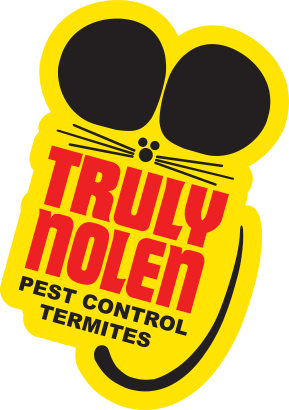
$50 Off Year Round Pest Control
Truly Nolen is a family-owned company with 85 years of experience providing the best pest control. If you’re not completely satisfied, you’ll get a full refund on your most recent service with our 100% money back guarantee.
The Truly Nolen Approach
Environmentally Conscious
We work to minimize our impact on the environment by using naturally occurring materials whenever possible.
Pet Friendly
Truly Nolen uses an Integrated Pest Management (IPM) approach designed with your pets in mind.
100% Money Back Guarantee
If you’re not completely satisfied, you’ll receive a full refund on your most recent service.
How Truly Nolen Gets Rid of Fleas
Truly Nolen follows a comprehensive process for treating a flea infestation. First, a thorough inspection is conducted to identify the extent of the infestation and key areas affected. Next, a combination of treatments is implemented, which may include targeted insecticide applications, vacuuming to remove adult fleas and eggs, steam treatments for upholstery or carpets, and the use of growth regulators to inhibit flea development. Additionally, guidance on proper pet treatment and ongoing monitoring is provided to ensure effective flea control and prevention.
Frequently Asked Questions
Can fleas infest my home even if I don’t have pets?
Yes, fleas can infest homes even if there are no pets present. Fleas can hitch a ride on clothing, shoes, or other animals, and they can also be brought inside on infested items such as rugs or furniture. Learn More!
How do I know if I have a flea infestation?
Signs of a flea infestation include flea bites on humans or pets, seeing live fleas jumping or crawling on surfaces, finding flea dirt (small black specks) on bedding or pet fur, and pets exhibiting excessive scratching or discomfort.
Are fleas harmful to humans?
While fleas primarily target animals, they can still bite and irritate humans. Flea bites can cause itching, redness, and in some cases, an allergic reaction. Fleas can also transmit diseases such as murine typhus and Bartonella (cat scratch disease).
How long does it take to eliminate a flea infestation?
The time required to eliminate a flea infestation varies depending on the severity and treatment methods used. It typically involves multiple treatments over a few weeks to ensure the elimination of fleas at all life stages, including eggs, larvae, pupae, and adult fleas.
Can I get rid of fleas on my own, or do I need professional help?
While there are DIY methods available, severe or persistent flea infestations often require professional assistance. Pest control professionals have the expertise and specialized treatments to effectively eliminate fleas, address hidden infestation areas, and provide guidance on preventing future infestations. Learn More!

